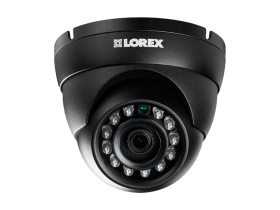Back in the day, simple yet free antennas were provided when buying a television. However, such antennas were only capable of showing poor quality and grainy channels. Thankfully, with the recent ubiquity of high-definition televisions (HDTV), you can now watch your favorite TV shows, without having to sacrifice clarity and sharpness.
Many times, it happens that after the antenna installation, we do not get a good signal. We all wonder what is to be done to improve the signal strength. For this, there are a few things that have to be kept in mind. To get the complete knowledge, you have to understand the principle advantages and some disadvantages of each type of antenna. Whether you are installing the antenna on your own or calling a professional installer to do the job, here is some useful information you should become aware of.
When installing a TV antenna, you’ll basically pay for the hardware – the antenna itself and any parts shipped with it. Do-it-yourselfers won’t spend a dime on labor of course.
But hiring a professional to do a proper job will probably cost the equivalent of around two to three months of your cable bill. I’ve written more on the topic here but the actual price will also depend on the complexity of your installation.
Types of TV Antennas Available Out There
Basically, there are two main types of antennas that are usually there:
Indoor TV antennas
These work better if you live close to a transmitter. These are generally installed indoors hanging above the TV or hanging in the balcony of houses. These are generally small in size.
Outdoor TV antennas
These antennas work similar to an indoor TV antenna but are fixed outdoors on rooftops generally. They are much larger in size. If you stay away from a transmitter, you have to buy a bigger sized antenna to amplify the signals.

Indoor TV Antenna Installation Procedure
Antenna installation of an indoor TV antenna is much easier than an outdoor one. Check the signal strength once you have plugged in the coax cable of the TV to the antenna. Make sure that you turn the TV off while doing this. Once complete, turn on the TV. If the pictures are still hazy, then try moving the antenna a lit bit to see if the signal quality improves. If not, then you can try installing the antenna in your balcony.
If you are still getting hazy pictures, then make sure that it is not near metal or magnetic objects or other electronic devices. It may be due to electromagnetic interference from these devices that may be making your signals hazy. Try to install the antenna at a height and move it a bit. Running a channel scan on your TV is a better idea every time you change the position of your antenna.
Installing an indoor antenna is very easy and can be done by yourself. It costs less than the installation of outdoor antennas, and it is highly portable in case you are relocating somewhere. However, it might not work well in low signal areas, and concrete walls around the antenna can easily block the signals resulting in interference. As the antenna size is small, the signal might easily interfere with other electrical and magnetic objects nearby.

Outdoor TV Antenna Installation Procedure
Nowadays, there are a variety of antennas on the market. And choosing the right one for your home can be an intimidating and tedious process. Rather than stressing yourself out, you can ask a technical professional what type of antenna works best depending on your location.
This type of antenna is also very common in households, but it is a lot more complex, and you need to understand the safety and performance before proceeding with the work. For guidance, you can read the antenna installation guide before installing the TV antenna. When positioning the antenna, you have to keep a special focus on the direction of the antenna, especially if yours is a dish antenna. Make sure to check the picture once before fixing it to the place. Again, you have to try and place the TV antenna as high as possible to get better signal strength.
Outdoor TV antennas are much larger, and thus you can get better signal strength and better picture clarity. Being bigger in size, they are able to magnify the signal strength, so that it works well even in areas away from the main transmitter. However, the installation of these antennas can be a hefty task and they are often more expensive than indoor TV antennas.
Antenna installation for your TV is not a big task, both for indoor and outdoor antennas. You can do it yourself and save a few bucks that you would have spent on hiring professionals. Just make sure to read the guidelines and follow them religiously.



























